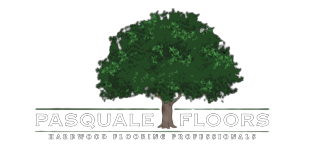
Flooring Red Flags That Could Kill Your Home Sale (And How to Fix Them)
When you’re selling your home, the floors matter more than you think. You might be used to that creaky step or the old carpet in the living room, but buyers see these problems differently. They walk in and immediately start worrying about what else might be wrong with the house.
Why Buyers Get Scared of Floor Problems
Home buyers make decisions with their hearts, not just their heads. When they see flooring issues, they don’t think “easy fix.” They think “expensive nightmare.” Even small problems make buyers wonder what other issues are hiding throughout the house.
Most floor problems are actually cheap and easy to fix, but buyers don’t know that. They’re already spending a lot of money on the house, and the thought of more costs right away can send them running to the next listing.
Water Damage: The Biggest Problem
Water damage is the worst thing buyers can find. Signs like stains on walls, musty smells, and warped floors don’t just mean you need new flooring – they could mean mold problems too . When home inspectors find water damage to baseboards that are warped and swollen, buyers see big red flags .
Water damage scares buyers because it can affect the whole house and cause major structural problems if it’s not fixed . Poor drainage can lead to flooded basements, foundation issues, and dangerous mold growth . Many buyers will walk away the moment they discover water-damaged floors, no matter how much they loved everything else about the house.
The money worries go way beyond just replacing the floors. Buyers start thinking about fixing moisture problems, getting rid of mold, and dealing with future issues. Even if the water damage happened years ago, buyers usually expect the worst.
Check Under Area Rugs for Hidden Surprises
Before listing your home, take time to lift up all area rugs and examine the floors underneath. You might discover picture framing or discoloration where rugs have been positioned for extended periods. This happens because sunlight naturally fades exposed flooring while areas under rugs remain their original color, creating visible outlines or borders.
These unexpected discoveries can be jarring when furniture and rugs are removed for showings or inspections. Buyers notice these inconsistencies immediately, and the uneven appearance can make your floors look poorly maintained even when they’re in good condition. If you find significant discoloration patterns, consider professional floor refinishing or strategically repositioning furniture and rugs to minimize the contrast before showing your home.
Squeaky Floors: Small Sounds, Big Worries
Squeaky floors might not bother you, but they can really worry buyers. Squeaks usually mean the floor is moving, which could be from loose screws, the house settling, or wood expanding and shrinking from moisture . While squeaky floors aren’t usually dangerous, buyers don’t always know that .
Buyers pay attention to noisy floors because they know movement means something has shifted or the wood is drying out . They start wondering: if the floors are moving now, what other problems will pop up later?
Every time buyers walk through your house and hear those creaks, they’re reminded of a potential problem. These sounds can make them forget all the good things about your home.

Pet Smells and Carpet Stains: Deal Breakers
Pet problems are some of the hardest issues to overcome when selling. Pet odors are one of the top things that turn buyers away, sometimes before they even look at the rest of the house . Even people who love pets might not want to deal with smells from someone else’s animals.
Carpet stains and pet odors create several problems. Some buyers might be allergic to pet hair stuck in the carpet, or they might worry they’ll have to replace all the flooring right after buying . This makes them offer less money because they’re already planning to spend more.
Pet smells are hard to get rid of completely, even with professional cleaning. Buyers know this and often think the odors have soaked deep into the floors underneath. Any bad smells – from pets, cooking, or smoking – can turn off buyers who want to picture themselves living happily in your home .
How Much Money You Could Lose
Floor problems don’t just cost you the price of repairs – they can cost you much more. When buyers find flooring issues, they often ask for credits that are way more than what the actual fixes would cost. They’re thinking about the hassle, the time, and possible surprises they might find once work starts.
In busy markets, homes with obvious floor problems might sit unsold longer, forcing you to drop your price by more than it would have cost to fix the floors first. Plus, homes that need immediate floor work appeal to fewer buyers, especially first-time buyers who don’t have extra cash after closing.
When you have several small floor problems, buyers often think you haven’t taken care of the whole house. This can lead to really low offers or complicated inspection requests that make selling much harder.
Smart Fixes for Sellers
The good news is that many floor problems are easier and cheaper to fix than buyers think. Think of floor improvements as investments that will help you sell faster and for more money.
For water damage, be honest and fix it right. Trying to hide water problems will backfire when the inspector finds them. Fix the moisture source, replace damaged materials, and keep records of the work. This shows buyers you’re a responsible homeowner.
Squeaky floors are often cheap to fix. Simple solutions like tightening screws or adding some adhesive can stop most squeaks for way less than buyers imagine it costs.
For pet odors and old carpet, sometimes replacement is your best bet. New carpet or refinished hardwood can make a huge difference in how buyers feel about your home. Professional cleaning can work for minor issues, but be realistic about what cleaning can and can’t do.
Whether you should fix floors before listing depends on your local market and how bad the problems are. In markets where buyers have lots of choices, fixing these issues first is usually smart. In hot markets, you might be able to offer credits instead, but you’ll still limit how many buyers will consider your home.
The bottom line is simple: small investments in your floors can lead to big improvements in buyer interest and your final sale price. In real estate, how things look and feel often matters more than the actual facts. A little work on your floors now can save you thousands later and help your home sell faster.
